I was digging up old samples today to drink, and found this
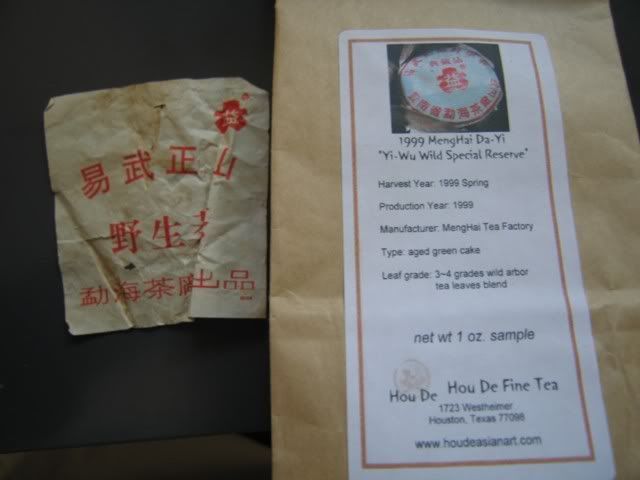
The last time I tried this tea was before I went to China, so at least a year ago. It’s been a while. Why not?
The tea is very tightly compressed. I decided to use up the remaining sample I have. I could try to split it into two sessions, but I decided not to.
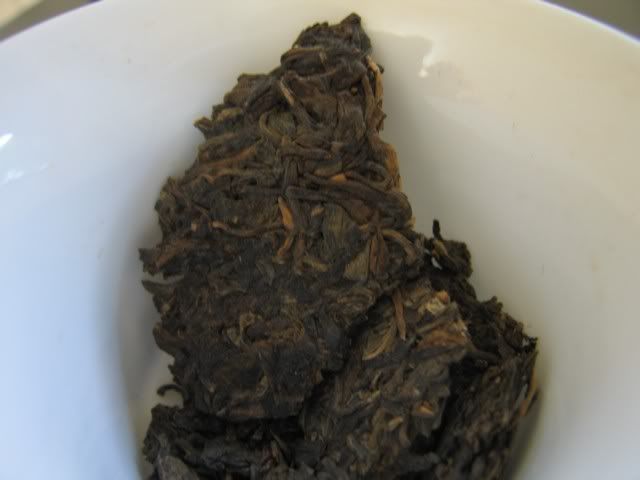
The last time I tried it I didn’t say much about it. I don’t think I had enough experience with younger puerh at the time to know what I was talking about. Now I think I’m slightly better equipped to deal with this tea.
The short version is — I’m not sure if this is Yiwu, if this is 99, if this is a wild tea, or if this is a Menghai. I don’t think this is a Yiwu because it is too bitter for what it is. It also doesn’t taste very much like a Yiwu that’s aged a few years. In fact, it reminds me most of my 2002 Mengku cakes. The taste profile are very very similar — some bitterness, some astringency, chocolate like flavours, etc. I don’t think this is necessarily 99 because of some of the same reasons, but also because I don’t think I’ve encountered another 1999 Yiwu from Menghai other than Green Big Tree. I can very well be wrong on this. I don’t think this is a wild tea because the tea lacks any sort of throatiness — the flavour stays entirely on the tongue and nowhere else. Huigan is basically nonexistent, especially given the relatively high amount of leaves I’m using. As for Menghai… something about the wrapper (or the little picture of the wrapper) makes me wonder. The very large Menghai words in the bottom looks different than the versions I’ve seen, which have a small font. I’m not saying this is fake, it might not be, but it does look a little funny.
Either way, I don’t think this is a Yiwu, never mind the special reserve designation. Even if it were Yiwu, I don’t think it is a particularly good one. I’ve had better. It lacks the high perfumy notes I’ve encountered in aged-a-bit Yiwus. Instead, it tastes heavy like Mengku tea, which are way cheaper.
Not that this thing is on sale anymore, so it doesn’t really matter anyway. It’s good to know though that I didn’t miss out on a treasure.
Some pictures of the tea and the wet leaves….
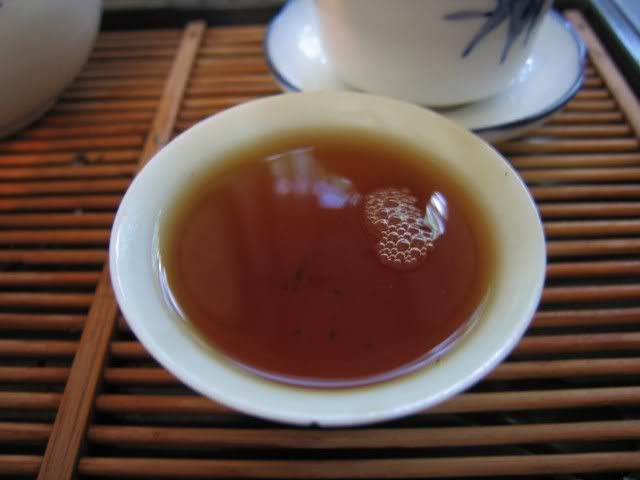
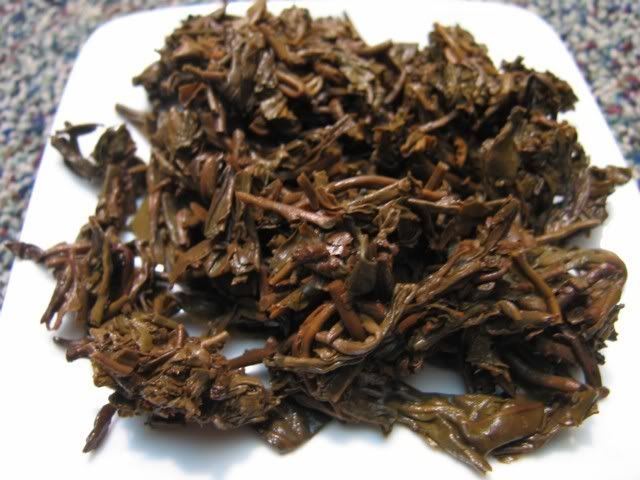
The wet leaves are turning brown, but still mostly greenish tinted (not too obvious in this picture). The leaves are very heavily compressed and also quite chopped up.

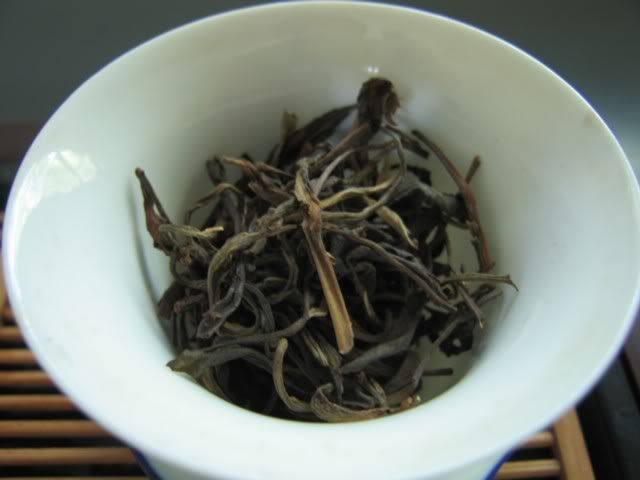
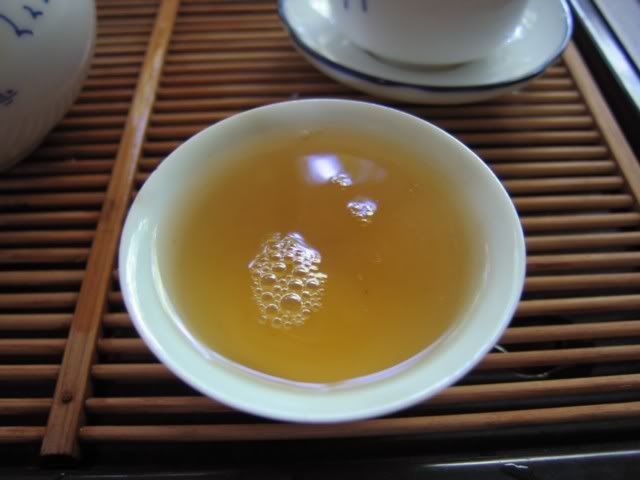
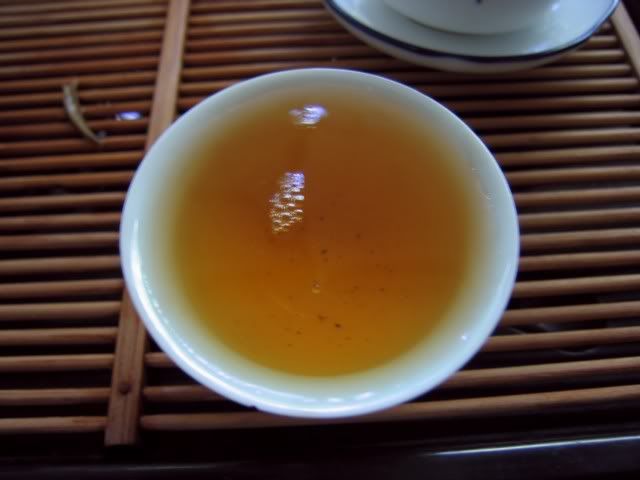
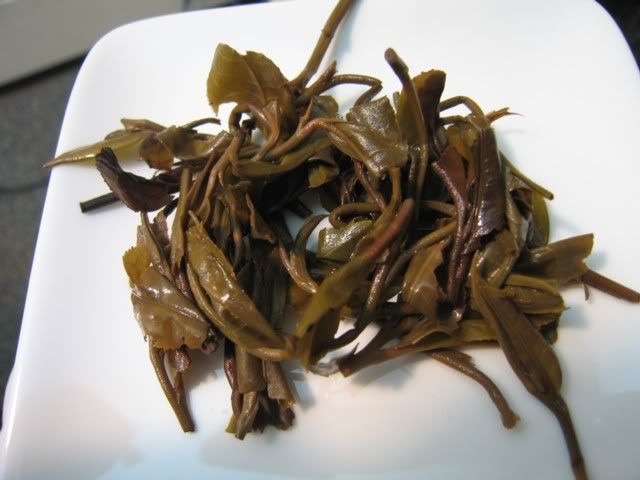
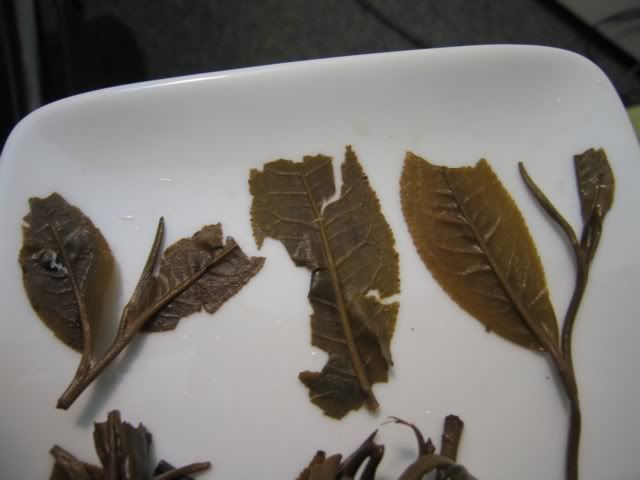
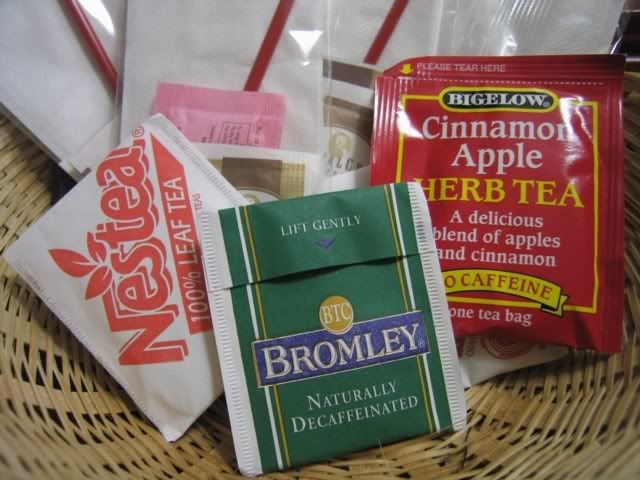
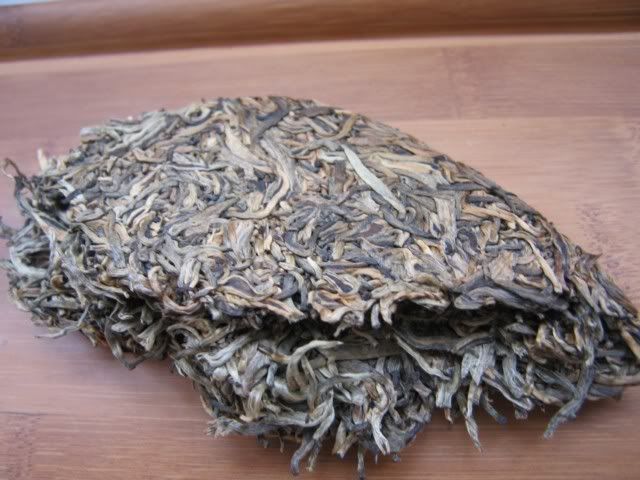
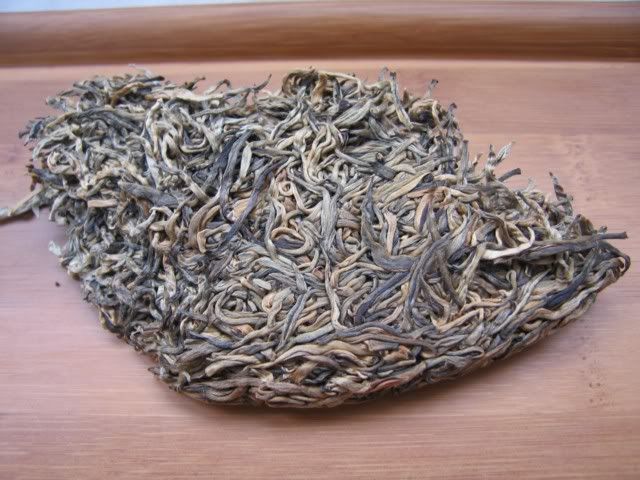
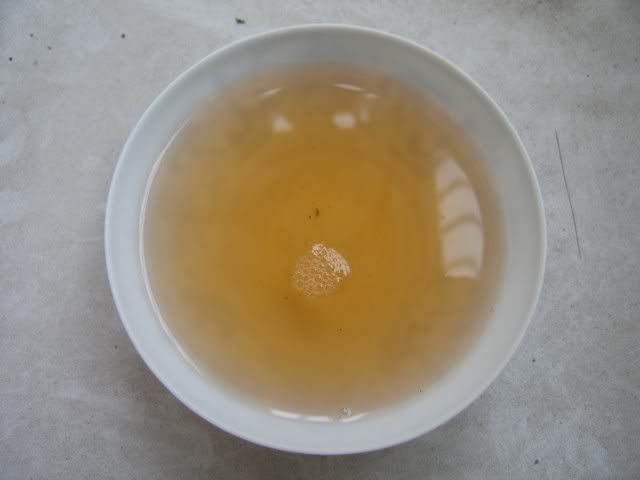
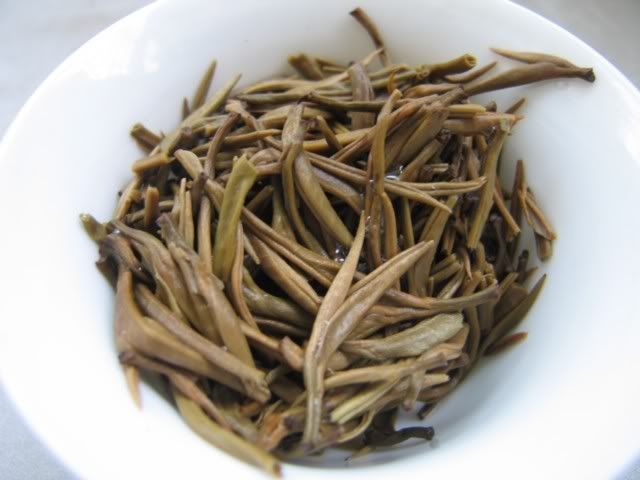
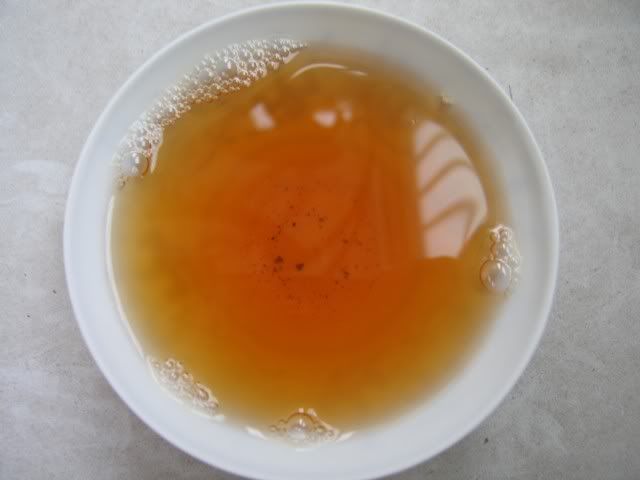

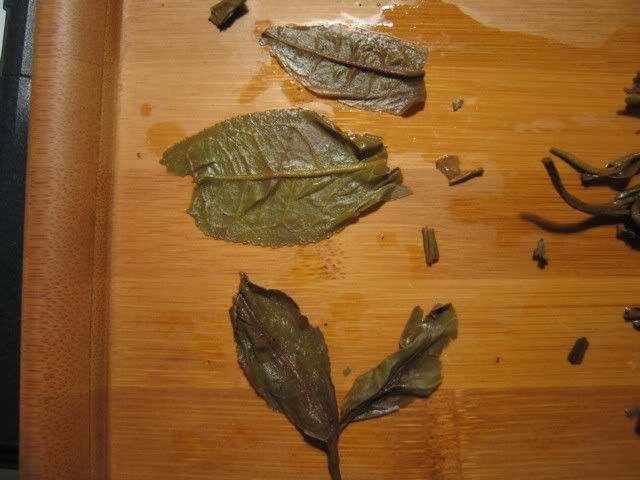
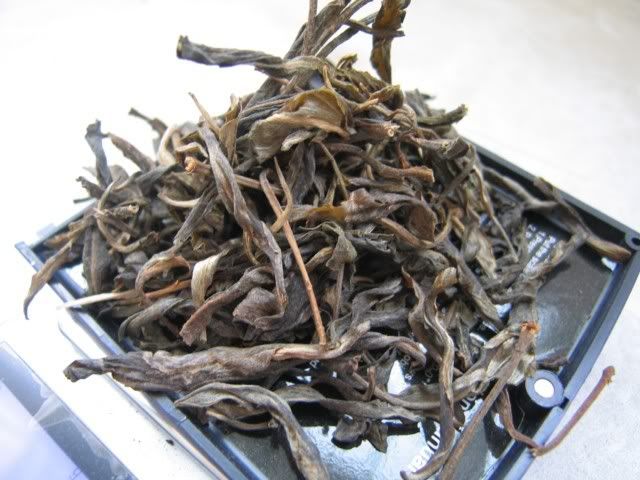
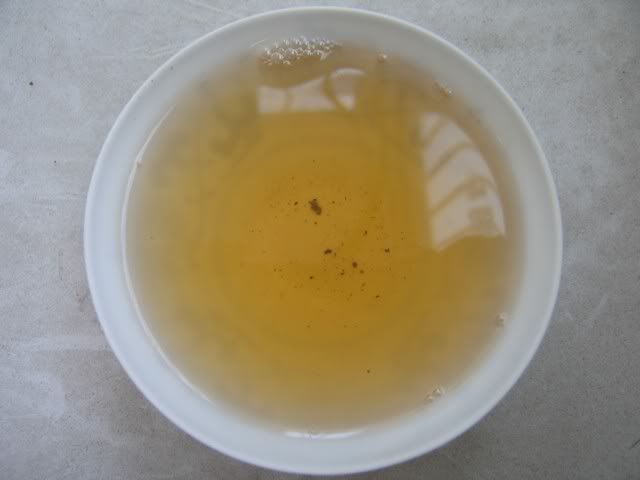
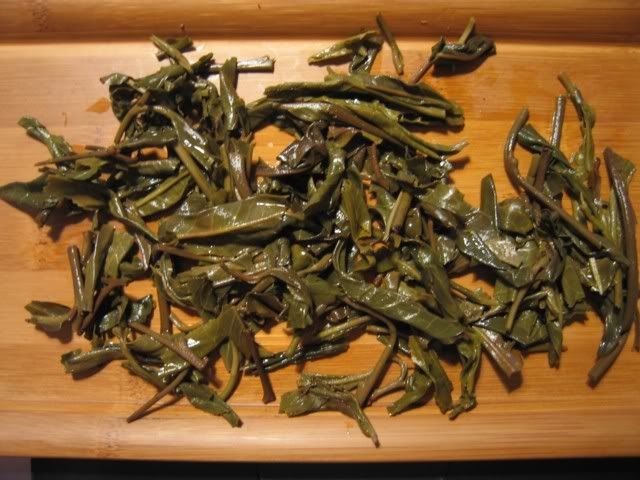
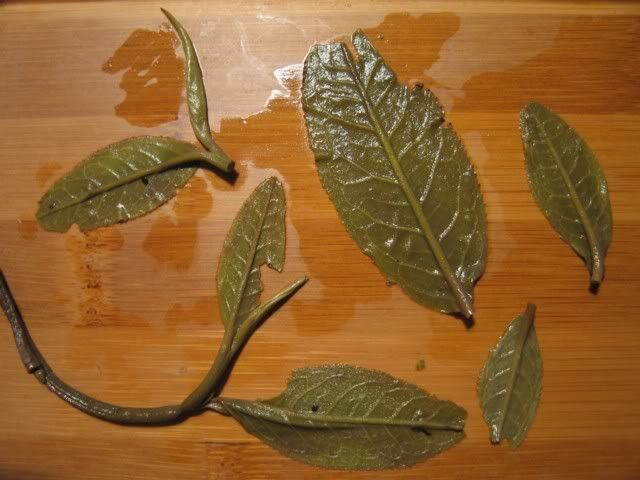
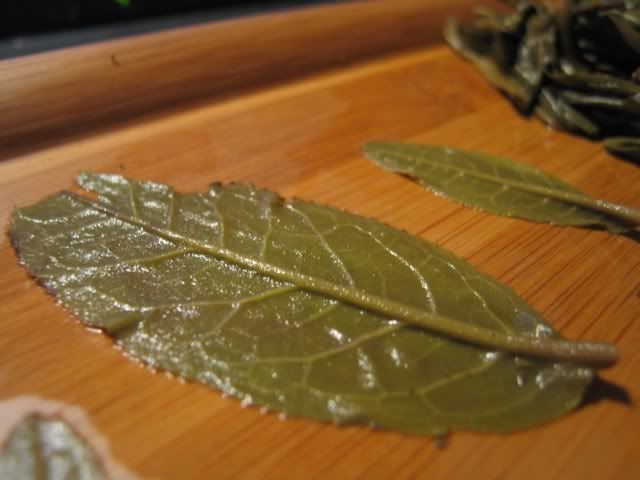
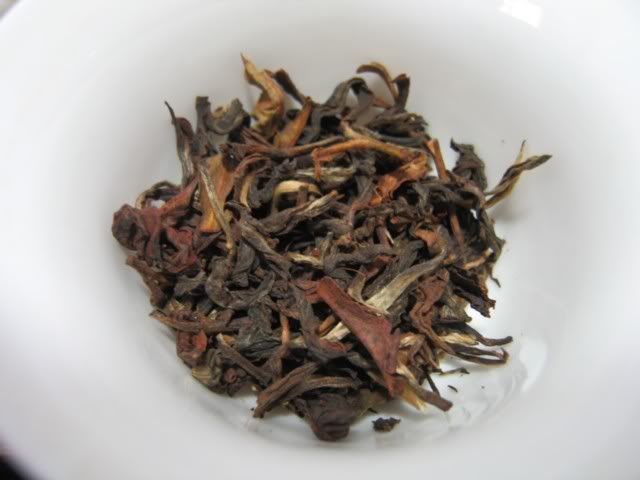
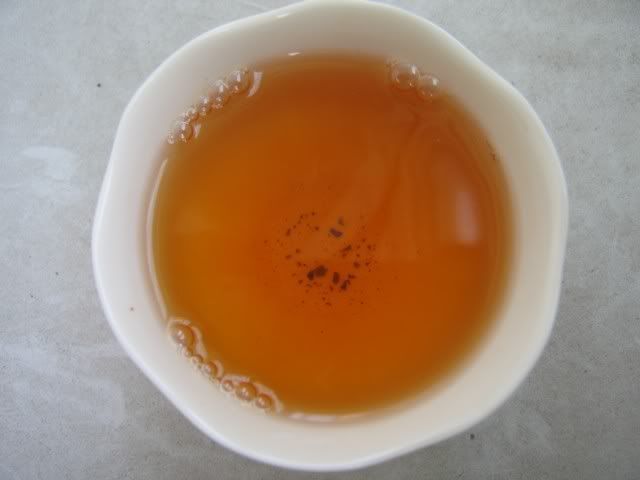
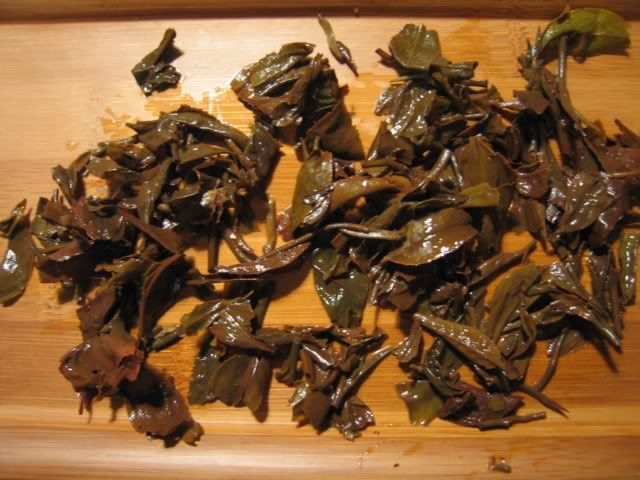
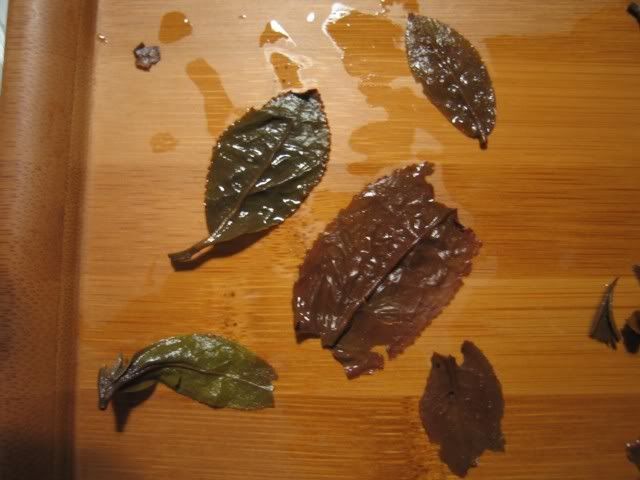
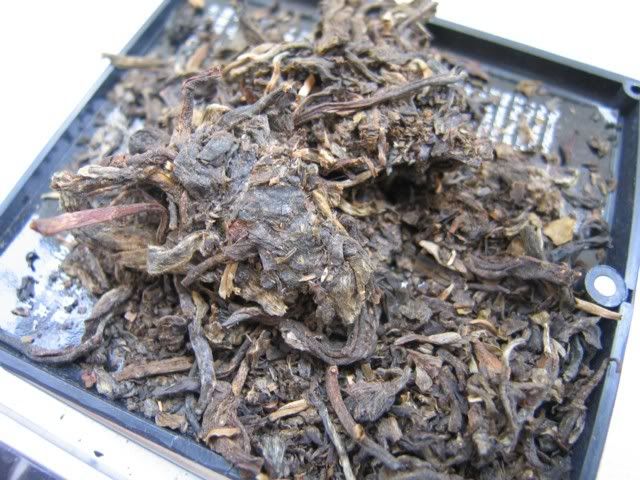
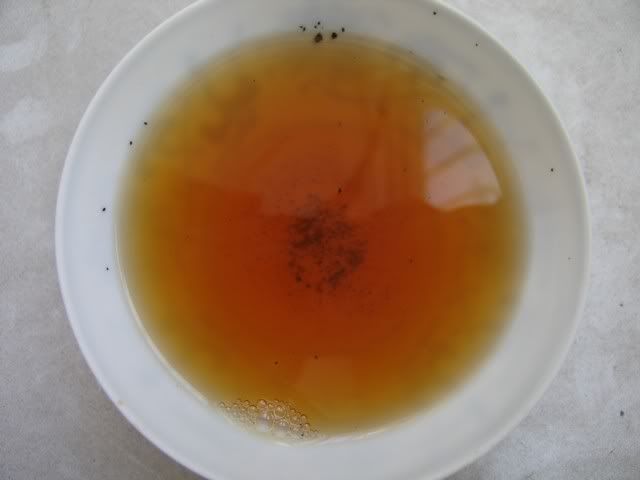
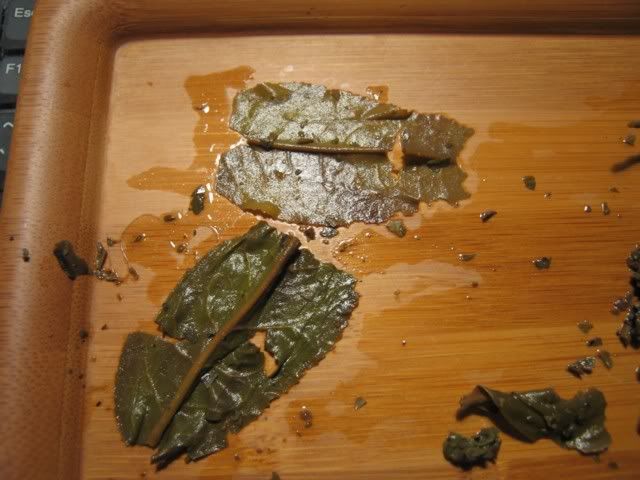
 RSS - Posts
RSS - Posts
Interesting.... would 250C in my oven work?